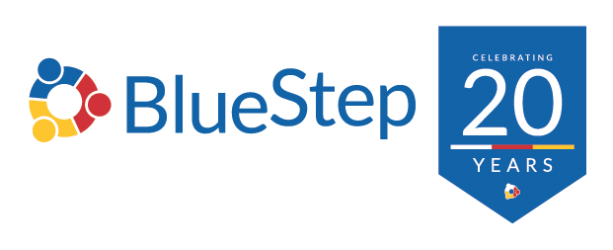Assisted living communities play a pivotal role in providing a supportive and caring environment. A crucial aspect of ensuring the well-being and safety of residents within these communities is the meticulous management of assisted living records, ranging from medical histories to personal preferences.
Efficient and organized record-keeping is not merely about administrative precision but foundational to delivering personalized, quality care and maintaining legal compliance.
This blog explores the best practices for keeping assisted living records organized, delving into the significance of implementing electronic health records, conducting regular audits and updates, securing storage and backup, and leveraging technology to overcome common challenges in record-keeping.
By adopting these practices, assisted living communities will enhance operational efficiency, foster a trusting environment, and ensure the highest standard of care for their residents.
The Importance of Organized Assisted Living Records
Organizing assisted living records meticulously is pivotal for both ensuring quality care and maintaining legal compliance within assisted living communities.
- Ensuring quality care looks like having quick access to vital information, personalized care plans, enhanced communication, monitoring progress, and adjusting care.
Organized records allow caregivers to quickly access residents’ medical histories, preferences, and needs, enabling them to make informed decisions promptly. This is critical in emergencies when swift access to medical information can be life-saving.
Detailed and well-organized records facilitate the creation of personalized care plans, accounting for each resident’s unique medical conditions, preferences, and requirements. This ensures that residents receive the most appropriate and effective care tailored to their individual needs.
Organized records serve as a comprehensive communication tool among different caregivers and medical professionals, ensuring continuity and consistency in care. This prevents any miscommunication or oversight in residents’ care plans and medical administration.
Records that are updated and maintained help to monitor the health and well-being of the resident. This enables timely adjustments to care plans and interventions, ensuring optimal outcomes for residents. - Legal compliance includes adherence to regulations, protection against legal complications, financial accountability, and privacy and security compliance.
Assisted living communities must comply with various state and federal regulations regarding record-keeping. Organized and accurate records ensure that communities meet these legal requirements, avoiding penalties and ensuring the lawful operation of the community.
In the event of legal disputes or complaints, well-organized and detailed records serve as crucial evidence, demonstrating the quality and appropriateness of care provided. This protects communities and staff from potential legal ramifications and helps resolve disputes efficiently.
Organized financial records are essential for billing, insurance claims, and financial audits. This ensures transparency and accuracy in financial transactions, preventing any legal issues related to billing and payments.
Proper organization and secure storage of records are crucial for complying with privacy laws like HIPAA. This safeguards residents’ sensitive information and prevents unauthorized access, protecting communities from legal breaches related to information security.
Organizing assisted living records is a multifaceted approach that goes beyond mere administrative efficiency. It is a foundational element in providing quality care to residents and operating within the legal frameworks governing assisted living communities.
By maintaining organized, accurate, and secure records, communities optimize the well-being of residents while mitigating legal risks and enhancing overall operational efficacy.

Types of Records in Assisted Living Communities
In assisted living communities, maintaining various records is crucial to ensure residents’ well-being and the community’s smooth operation. Here’s a closer look at the different types of records typically maintained:
- Medical records: Medical records are essential for documenting residents’ health conditions, medical history, treatments, and medications, enabling caregivers to provide appropriate and personalized care.
- Personal information: Personal information records are crucial for understanding residents’ preferences, needs, and emergency contacts, ensuring their comfort and safety within the community.
- Financial records: Financial records are necessary for managing billing, payments, and insurance claims, ensuring transparency and accuracy in financial transactions.
In assisted living communities, the meticulous maintenance of medical records, personal information, and financial records is indispensable. Each type of record serves a unique purpose, contributing to the overall well-being of residents, the provision of personalized care, and the seamless operation of the community.
By respecting the confidentiality and integrity of these records, assisted living communities foster a trusting and harmonious environment for both residents and staff.
Best Practices for Organizing Assisted Living Records
Organizing assisted living records efficiently is crucial for the smooth operation of assisted living communities and the well-being of the residents. To organize your records, we recommend implementing electronic health records, conducting regular audits, and having secure storage and backup.
- Implementing electronic health records (EHR): Assisted living communities should adopt comprehensive EHR systems to digitize and organize residents’ medical information, replacing or complementing traditional paper-based records.
EHRs are accessible, efficient, accurate, and easily integrated. - Accessibility: EHRs allow for quick and easy access to residents’ health information, facilitating informed decision-making and timely interventions.
- Efficiency: Digital records streamline administrative tasks, reduce paperwork, and enhance the overall efficiency of record management.
- Accuracy: EHRs minimize the risk of data entry errors and ensure the accuracy and completeness of medical information.
- Integration: EHR systems can integrate with other software solutions, enabling seamless information exchange between different departments and healthcare providers.
- Conducting regular audits and updates: Regular audits and updates are integral components of best practices for organizing assisted living records. They ensure the records’ accuracy, completeness, and relevancy, which is vital for providing quality care and maintaining legal compliance.
Audits should be scheduled at regular intervals (think quarterly or annually) and include a representative sample of records covering different types of records (medical, personal, and financial).
There should also be clear criteria for evaluating records, including accuracy of information, adherence to data entry protocols, and compliance with privacy laws.
The outcome of the audit should include identifying errors, fixing them, and finding ways to improve the system continuously. - Having secure storage and backup: Having secure storage and backup is another critical aspect of best practices for organizing assisted living records. It is essential for protecting sensitive information and ensuring the availability of records when needed.
Secure storage means protecting sensitive information, having physical and digital security, and controlling who can access what documents. There are also HIPAA privacy laws to follow.
Assisted living records often contain sensitive and confidential information, requiring stringent security measures to prevent unauthorized access, alteration, or disclosure.
Use locked filing cabinets or secure storage rooms with restricted access to physical records. Implement robust cybersecurity measures such as encryption, firewalls, and secure access controls for digital records.
For proper access control, limit records access to authorized personnel only, and implement strict authentication protocols to verify the identity of individuals accessing the records. Maintain logs of access and modifications to records to track usage and detect any unauthorized or suspicious activity.
Finally, ensure that HIPAA laws are followed. This will help you avoid legal repercussions and maintain residents’ trust.
As for backup, you’ll want to back everything up regularly to ensure data is not lost if something accidentally gets deleted, your hardware fails, or there’s a cyberattack.
Backups should happen regularly (daily or weekly) and be cloud-based or stored on external storage devices. Additionally, each backup should ensure security data. Have a plan in place to quickly recover data should something happen.
Challenges and Solutions in Record-Keeping
- Staff training: Lack of proper training leads to inaccuracies, inconsistencies, and non-compliance in record-keeping. The solution is to develop comprehensive training programs that educate staff on record-keeping protocols, data entry procedures, and compliance requirements.
Once staff are fully trained, provide continuous support and resources to address queries and challenges that come up over time. Regularly assess staff performance and provide feedback and training as needed. - Data entry errors or misplaced files: Human errors in data entry or misplacement of files can compromise the accuracy and availability of records. Implementing standardized formats and record templates to minimize errors and inconsistencies is the best solution. Having verification procedures is also useful.
- Leverage technology: We recommend adopting an advanced software solution to replace outdated record-keeping systems, which are often inefficient, error-prone, and insecure. A user-friendly system you can customize will be ideal for your community.
Get Your Assisted Living Charting Systems From BlueStep Systems
Taking the step towards organized, secure, and efficient record-keeping is paramount in elevating the quality of care provided in assisted living communities. Don’t let the challenges of record management hinder your commitment to delivering exceptional care to your residents.
Choose BlueStep Systems for your assisted living charting needs. Our advanced solutions are designed to meet the unique needs of assisted living communities, offering user-friendly interfaces, robust security, and seamless integration capabilities.
Transform your record-keeping practices with BlueStep Systems and ensure that every piece of information is accurately recorded, easily accessible, and securely stored.
Request a demo today, and explore how we can assist you in creating a more organized, compliant, and efficient assisted living community. Let’s work together to enhance the lives of those in your care!


